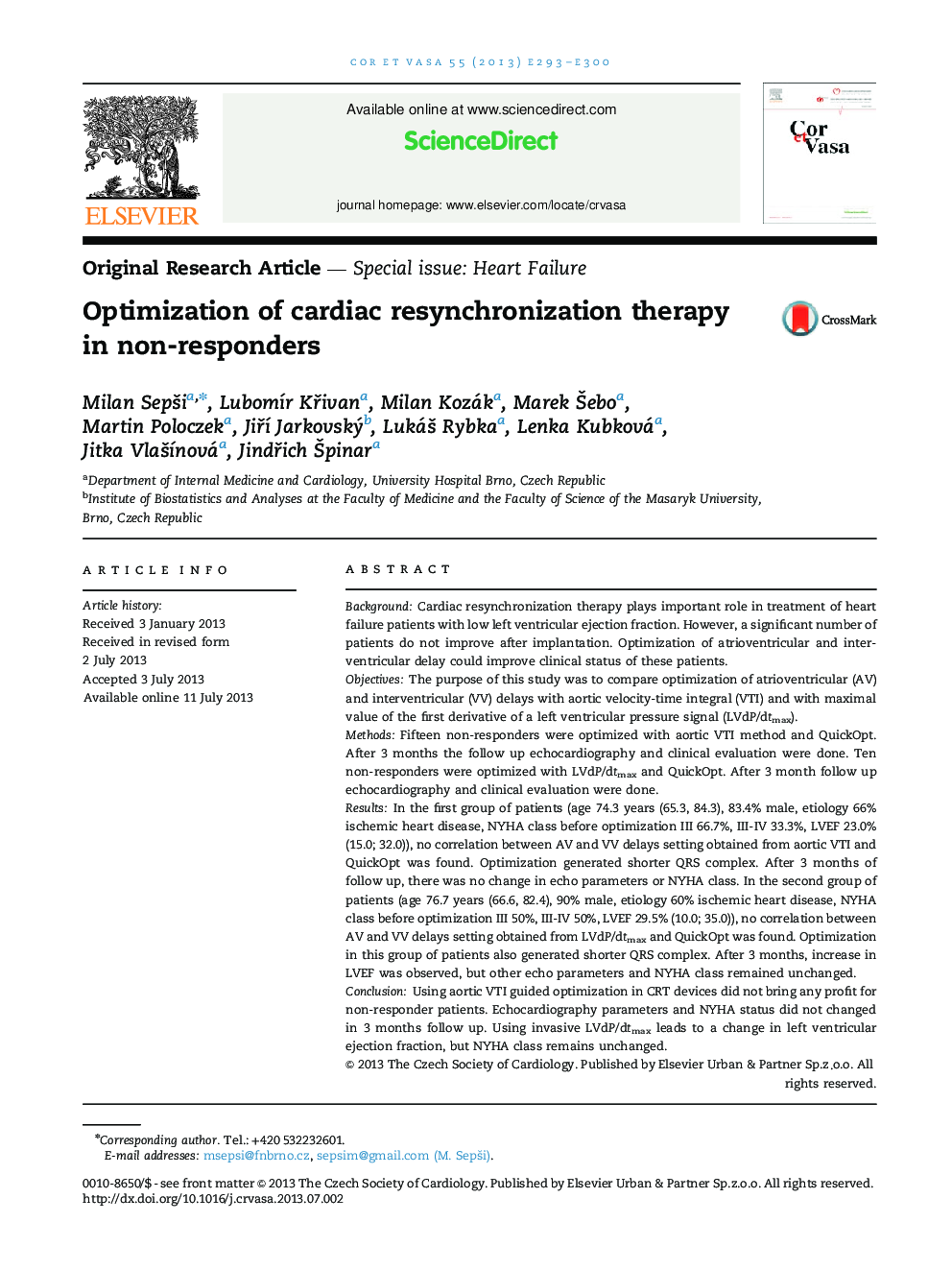| Article ID | Journal | Published Year | Pages | File Type |
|---|---|---|---|---|
| 2728440 | Cor et Vasa | 2013 | 8 Pages |
BackgroundCardiac resynchronization therapy plays important role in treatment of heart failure patients with low left ventricular ejection fraction. However, a significant number of patients do not improve after implantation. Optimization of atrioventricular and interventricular delay could improve clinical status of these patients.ObjectivesThe purpose of this study was to compare optimization of atrioventricular (AV) and interventricular (VV) delays with aortic velocity-time integral (VTI) and with maximal value of the first derivative of a left ventricular pressure signal (LVdP/dtmax).MethodsFifteen non-responders were optimized with aortic VTI method and QuickOpt. After 3 months the follow up echocardiography and clinical evaluation were done. Ten non-responders were optimized with LVdP/dtmax and QuickOpt. After 3 month follow up echocardiography and clinical evaluation were done.ResultsIn the first group of patients (age 74.3 years (65.3, 84.3), 83.4% male, etiology 66% ischemic heart disease, NYHA class before optimization III 66.7%, III-IV 33.3%, LVEF 23.0% (15.0; 32.0)), no correlation between AV and VV delays setting obtained from aortic VTI and QuickOpt was found. Optimization generated shorter QRS complex. After 3 months of follow up, there was no change in echo parameters or NYHA class. In the second group of patients (age 76.7 years (66.6, 82.4), 90% male, etiology 60% ischemic heart disease, NYHA class before optimization III 50%, III-IV 50%, LVEF 29.5% (10.0; 35.0)), no correlation between AV and VV delays setting obtained from LVdP/dtmax and QuickOpt was found. Optimization in this group of patients also generated shorter QRS complex. After 3 months, increase in LVEF was observed, but other echo parameters and NYHA class remained unchanged.ConclusionUsing aortic VTI guided optimization in CRT devices did not bring any profit for non-responder patients. Echocardiography parameters and NYHA status did not changed in 3 months follow up. Using invasive LVdP/dtmax leads to a change in left ventricular ejection fraction, but NYHA class remains unchanged.
